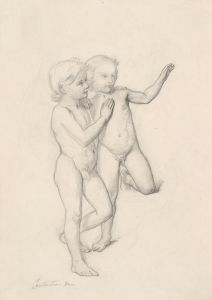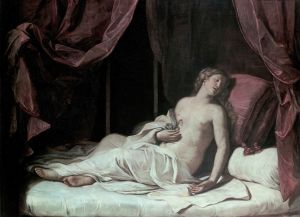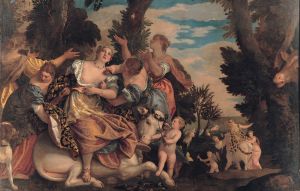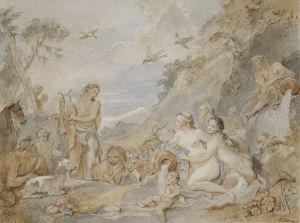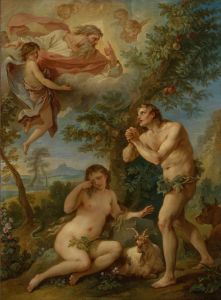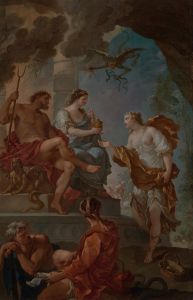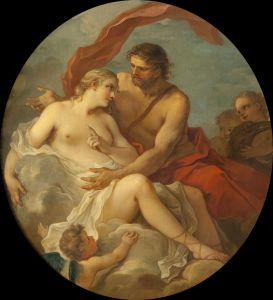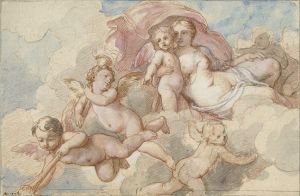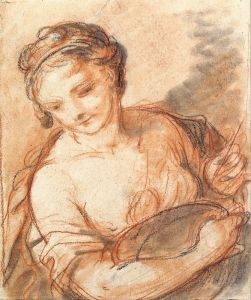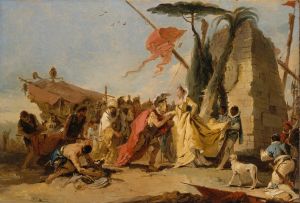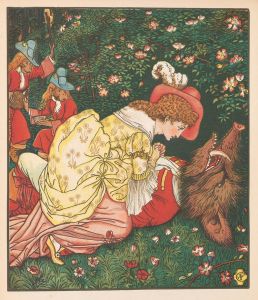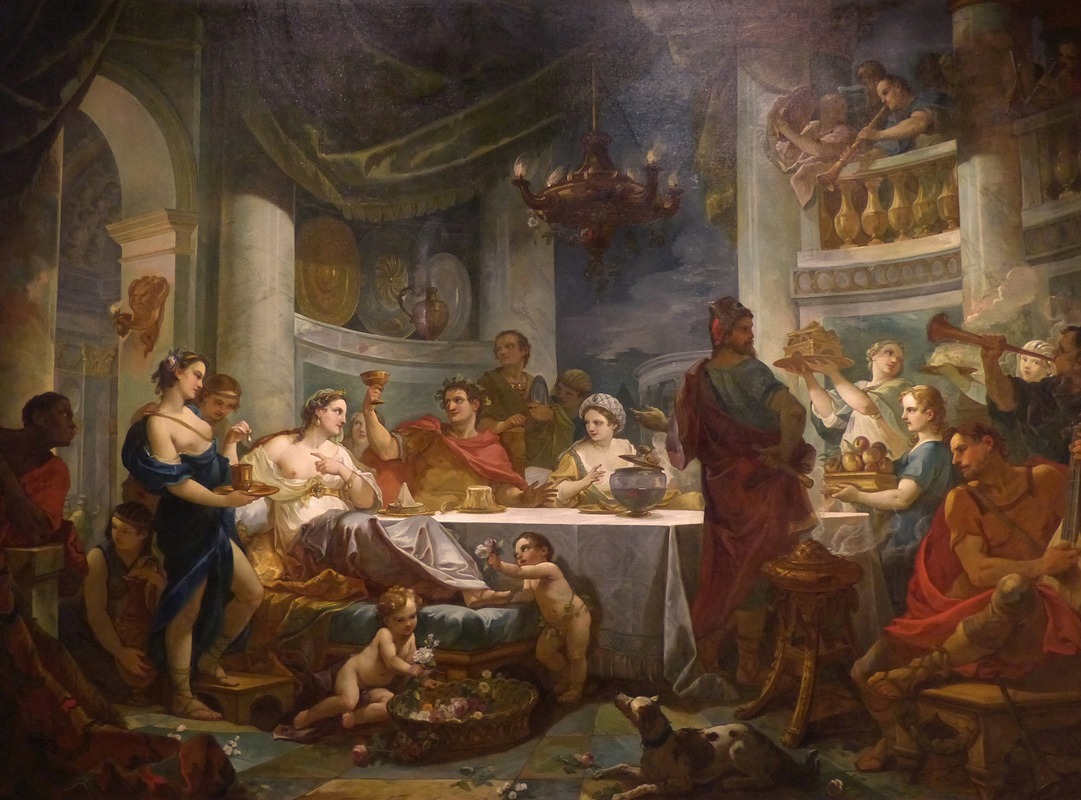
Le repas de Cléopâtre et de Marc-Antoine
A hand-painted replica of Charles-Joseph Natoire’s masterpiece Le repas de Cléopâtre et de Marc-Antoine, meticulously crafted by professional artists to capture the true essence of the original. Each piece is created with museum-quality canvas and rare mineral pigments, carefully painted by experienced artists with delicate brushstrokes and rich, layered colors to perfectly recreate the texture of the original artwork. Unlike machine-printed reproductions, this hand-painted version brings the painting to life, infused with the artist’s emotions and skill in every stroke. Whether for personal collection or home decoration, it instantly elevates the artistic atmosphere of any space.
Charles-Joseph Natoire's painting "Le repas de Cléopâtre et de Marc-Antoine" is an exquisite example of 18th-century French art, capturing a legendary moment from ancient history. Natoire, a prominent Rococo artist, was known for his skillful compositions and delicate use of color, which are evident in this work.
The painting depicts the famous banquet scene between Cleopatra VII, the last active ruler of the Ptolemaic Kingdom of Egypt, and Mark Antony, a Roman politician and general. This event is famously chronicled by Pliny the Elder in his "Natural History," where Cleopatra, in a display of her wealth and power, dissolves one of the largest pearls in vinegar and drinks it, winning a bet with Antony about her ability to host the most expensive dinner.
Natoire's interpretation of this scene is both dramatic and elegant, reflecting the opulence and theatricality of the Rococo period. The composition is carefully balanced, with Cleopatra and Antony as the focal points. Cleopatra is often depicted in a regal pose, emphasizing her status and charisma, while Antony is shown as captivated and somewhat awed by her presence. The setting is luxurious, with rich draperies and sumptuous furnishings that highlight the wealth and sophistication of the Egyptian court.
The artist's use of color is particularly noteworthy. Natoire employs a palette of soft pastels and rich hues, which are characteristic of the Rococo style. The delicate rendering of fabrics and textures adds to the painting's sense of luxury and refinement. Light plays an important role in the composition, with strategic highlights drawing attention to Cleopatra's face and the pearl, underscoring the central theme of the narrative.
Natoire's work is not only a depiction of a historical anecdote but also a reflection of 18th-century European fascination with the exotic and the ancient world. During this period, there was a renewed interest in classical antiquity, and stories of Cleopatra and Antony were popular subjects in art and literature. Natoire's painting captures this zeitgeist, blending historical storytelling with the aesthetic sensibilities of his time.
The painting also serves as a testament to Natoire's artistic prowess. As a leading figure in the French art scene, he was a member of the prestigious Académie Royale de Peinture et de Sculpture and served as the director of the French Academy in Rome. His works were highly regarded for their elegance and technical skill, and "Le repas de Cléopâtre et de Marc-Antoine" is a prime example of his mastery.
While the exact date of the painting's creation is not specified, it is consistent with Natoire's mature period, when he was producing some of his most celebrated works. Today, the painting is appreciated not only for its artistic qualities but also for its ability to convey a captivating story from history, making it a valuable piece for both art historians and enthusiasts of classical antiquity.
In summary, Charles-Joseph Natoire's "Le repas de Cléopâtre et de Marc-Antoine" is a masterful representation of a legendary historical event, rendered with the elegance and sophistication characteristic of the Rococo period. Through his skillful use of composition, color, and light, Natoire brings to life the opulence and drama of Cleopatra's court, offering viewers a glimpse into the past through the lens of 18th-century artistic sensibilities.





